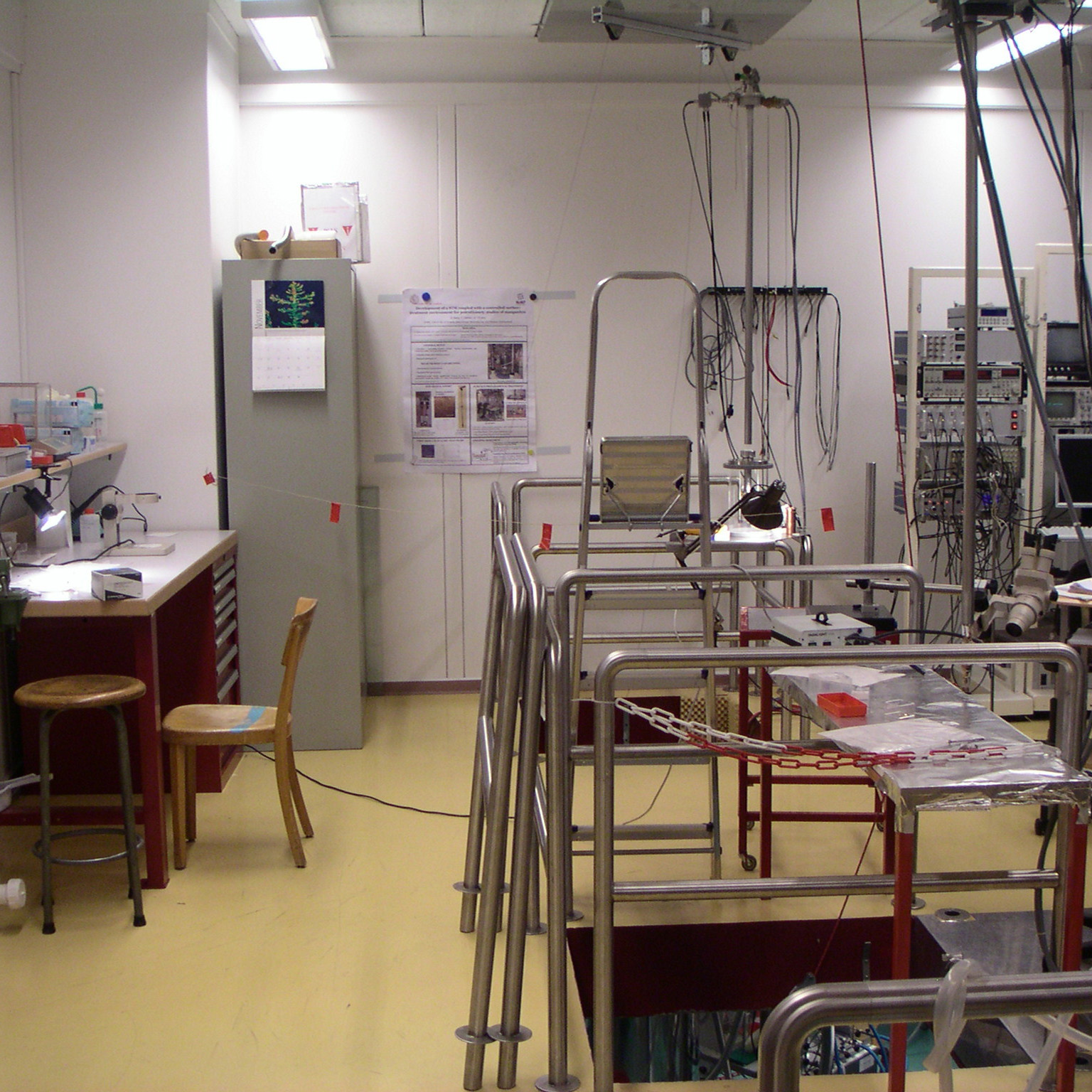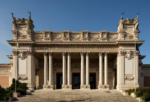Ripensare le pratiche

Convegno internazionale
Comunicato stampa
RIPENSARE LE PRATICHE: ARTI, SCIENZE E SPERIMENTAZIONE
Convegno internazionale
A cura di Philippe Sormani (Istituto Svizzero di Roma), Guelfo Carbone (Istituto Svizzero di Roma) e Priska Gisler (Hochschule der Künste Bern)
Con il sostegno del Fondo Nazionale Svizzero per la Ricerca Scientifica
[English version]
Di recente la relazione tra arti e scienze è diventata argomento di discussione tra studiosi e, talvolta, un cruccio politico e morale, portando a un rinnovato “dibattito sulla ricerca nelle arti” (Borgdorff 2006). Questo dibattito è stato nel passato recente riattizzato da riforme della formazione superiore al livello europeo, che hanno trasformato quelle che erano le scuole di arte in università di scienze applicate o università di arti. Di conseguenza, il dibattito presenta la tendenza a sperimentarsi su problemi terminologici e istituzionali che riguardano direttamente il carattere e la legittimità della “ricerca” su, attraverso, e/o nelle “arti” (Borgdorff 2006:6; Freyling 1993). Tuttavia, restano sporadiche eccezioni quelle indagini dettagliate delle pratiche artistiche in situ e in vivo, cioè quel genere di ricerche che devolvono una tale attenzione etnografica alla “ricerca nel suo farsi”, come è stato invece per il caso, ben più famoso, delle scienze da laboratorio (Knorr Cetina 1995). È su questo sfondo quindi che la conferenza invita i suoi partecipanti a cimentarsi con la rivisitazione delle pratiche al variegato crocevia tra arti e scienze, con un’attenzione particolare alla sperimentazione tra questi domini (Rheinberger 2012). Concentrarsi sulla sperimentazione dovrebbe consentire di discutere un argomento prodotto dagli storici delle arti e delle scienze, vale a dire quell’argomento per il quale “quello che la maggior parte degli sguardi (convenzionali) sull’‘arte’ e la ‘scienza’ come prodotti discreti ignora sono gli elementi in comune nelle pratiche che le producono entrambe” (Jones & Galison 1998:2). Più in generale la conferenza prende di mira le relazioni attuali tra discorsi istituzionali e pratiche di indagine nelle arti e nelle scienze, un argomento, questo, che sembra della più grande pertinenza date le presunte “de-marcazioni” (Entgrenzungen) di entrambi i domini (Jasanoff 2004; Rebentisch 2013; Reckwitz 2012).
Scarica il flyer e il programma completo
Conferenze principali:
L'arte contemporanea: paradigma plurale di trasgressione dei confini
Nathalie Heinich (Ecole des Hautes Etudes en Sciences Sociales, Parigi, Francia)
Questa conferenza presenta un'analisi sociologica dell'arte contemporanea come un "paradigma plurale della trasgressione dei confini" - cioè un insieme condiviso, sebbene diversificato, di metodi di lavoro e valori fondamentali, che è stato variamente messo in pratica per sfidare e sperimentare i confini tradizionali e le distinzioni convenzionali, incluso quella (o quelle) tra "arte" e "non arte". L'analisi sociologica si basa su una selezione di esempi, mostre, ed episodi di arte contemporanea.
Immagini artistiche e la produzione artistica della scienza: l'ibridazione delle pratiche artistiche e scientifiche
Michael E. Lynch (Dipartimento di Science & Technology Studies, Cornell University, Ithaca, NY, USA)
In campi come la nanotecnologia è comune nei laboratori più grandi ospitare artisti “in residence”, e le rappresentazioni artistiche si sono moltiplicate sul web, a volte strettamente associate, altre volte distanti dai siti di ricerca. Questa conferenza attinge al lavoro svolto nel campo degli studi scientifici e tecnologici (STS) e dell'etnometodologia per suggerire che l'"arte" visiva non è solo il prodotto di artisti professionisti residenti presso le strutture scientifiche, o di scienziati che cercano esplicitamente di creare immagini artistiche con lo scopo di promuovere la loro ricerca o di impegnarvisi in un modo creativo. Le rappresentazioni artistiche di materiali di ricerca sono presenti nella pratica quotidiana della scienza, e sono integrate con la visualizzazione dei fenomeni. L'intervento suggerisce che il valore pratico ed estetico di queste rappresentazioni artistiche potrebbe essere più significativo nella ricerca scientifica di quello di qualsiasi rappresentazione artistica di fenomeni scientifici prodotta esplicitamente.
Epistemica ed estetica della sperimentazione: verso una euristica ibrida?
Hans-Jörg Rheinberger (Max-Planck-Institut fuer Wissenschaftsgeschichte, Berlino, Germania)
Questo intervento discute l'epistemica e l'estetica della sperimentazione. In particolare, mostra come i nuovi approfondimenti e le nuove forme di espressione sono incardinate su pratiche sperimentali, sia nel campo delle arti che delle scienze. Si sostiene la necessità di una discussione congiunta, se non un maggiore allineamento delle rispettive storie e si apre una riflessione sulla "euristica ibrida" - una euristica dove il "nuovo" mescola (o sospende) le categorie finora separate di epistemica ed estetica.
Contatti: [email protected]
______________
REVISITING PRACTICE: ARTS, SCIENCES, AND EXPERIMENTATION
International Conference
Convened by Philippe Sormani (Istituto Svizzero di Roma), Guelfo Carbone (Istituto Svizzero di Roma) and Priska Gisler (Berne University of Arts)
Supported by the Swiss National Science Foundation
Of late, the relationship between the arts and sciences has become a topic of scholarly discussion and, at times, political and moral concern, leading to a renewed “debate on research in the arts” (Borgdorff 2006). This debate has recently been sparked by reforms in European higher education, transforming former art schools into universities of applied sciences or universities of the arts. Consequently, the debate has tended to rehearse terminological and institutional issues, regarding the character and legitimacy of “research” on, for, and/or in the “arts” (Borgdorff 2006:6; Freyling 1993). Rare, however, remain detailed investigations of artistic practices in situ and in vivo, investigations that devote a similar ethnographic attention to “research in the making” as this had famously been the case for the laboratory sciences (cf. Knorr Cetina 1995). It is against this background, then, that the present conference invites its participants to engage in revisiting practices at the manifold intersections of the arts and sciences, with a particular focus on experimentation across these domains (cf. Rheinberger 2012). The focus on experimentation shall allow us to discuss an argument made by art and science historians, the argument according to which “what much of (a conventional) focus on ʻartʼ and ʻscienceʼ as discrete products ignores are the commonalities in the practices that produce them” (Jones & Galison 1998:2). More broadly, the conference addresses the current relationship(s) between institutional discourses and practical inquiries in the arts and sciences, a topic that seems all the more pertinent given the alleged “de-marcations” (Entgrenzungen) of both domains (e.g., Jasanoff 2004; Rebentisch 2013; Reckwitz 2012).
Download flyer and full program
Keynote Addresses:
Contemporary art: pluralized paradigm of boundary transgression
Nathalie Heinich (Ecole des Hautes Etudes en Sciences Sociales, Paris, France)
This keynote address offers a sociological analysis of contemporary art as a “pluralized paradigm of boundary transgression” – that is, a shared, yet diversified set of working methods and core values, which has been variously put into practice to challenge, and experiment with, traditional boundaries and conventional distinctions, including the distinction(s) between “art” and “non-art”. The sociological analysis is based on selected examples, exhibits, and episodes from contemporary art.
Artistic images and the artful production of science: the hybridization of artistic and scientific practices
Michael E. Lynch (Department of Science & Technology Studies, Cornell University, Ithaca, NY, USA)
In fields such as nanotechnology it is common in larger laboratories to host artists in residence, and artistic renderings have proliferated on the web, sometimes closely associated with and sometimes remote from research sites. This keynote address draws upon work in science and technology studies (STS) and ethnomethodology to suggest that visual “art” is not only a product of professional artists-in-residence at scientific facilities, or of scientists explicitly attempting to create artistic images to promote their research or playfully engage with it. Artful renderings of research materials also are featured in the day-to-day practice of science, and are integrated with the visualization of phenomena. The talk suggests that the practical and aesthetic value of such artful renderings might be more significant in scientific research than that of any explicitly produced artistic representations of scientific phenomena.
Epistemics and aesthetics of experimentation: towards a hybrid heuristics?
Hans-Jörg Rheinberger (Max Planck Institut fuer Wissenschaftsgeschichte, Berlin, Germany)
This keynote address discusses the epistemics and aesthetics of experimentation. In particular, it charts how novel insights and new forms of expression have hinged upon experimental practices both in the arts and sciences. It argues for a joint discussion, if not a stronger alignment of their respective histories and opens up a reflection on “hybrid heuristics” – a heuristics where the “new” blends (or suspends) hitherto separated categories of epistemics and aesthetics.



